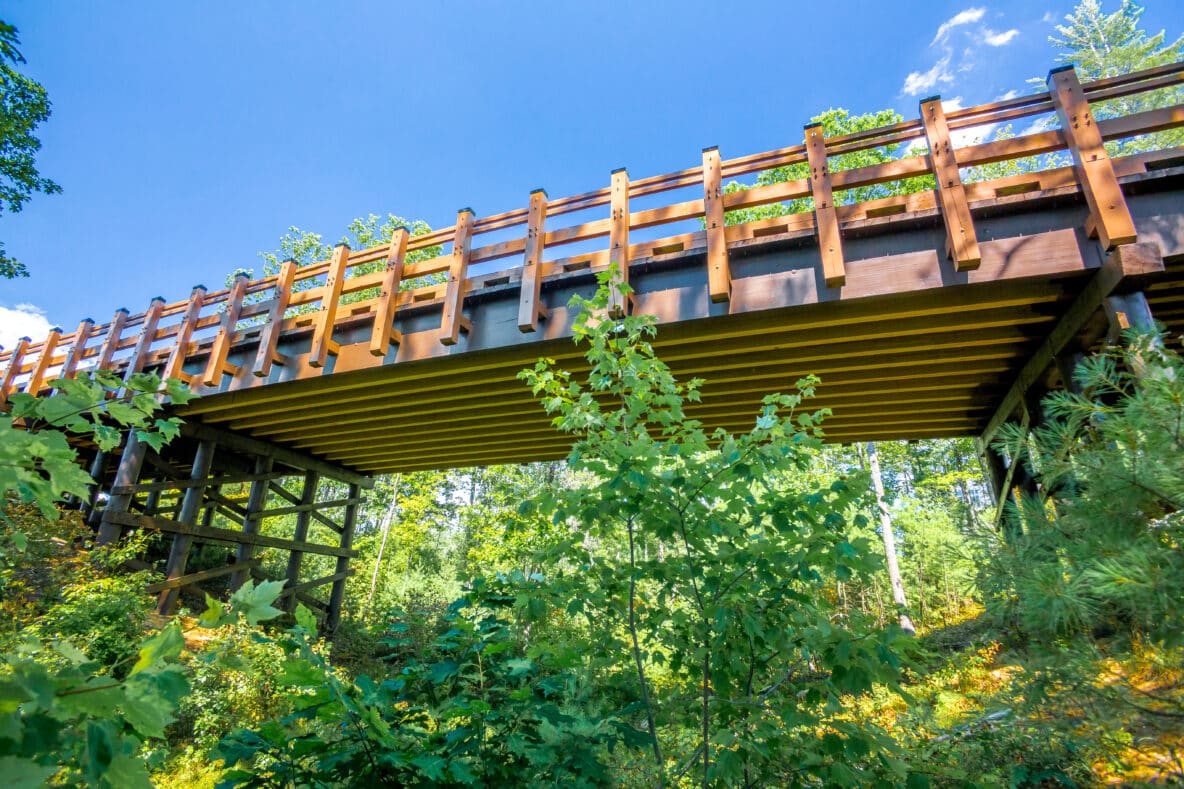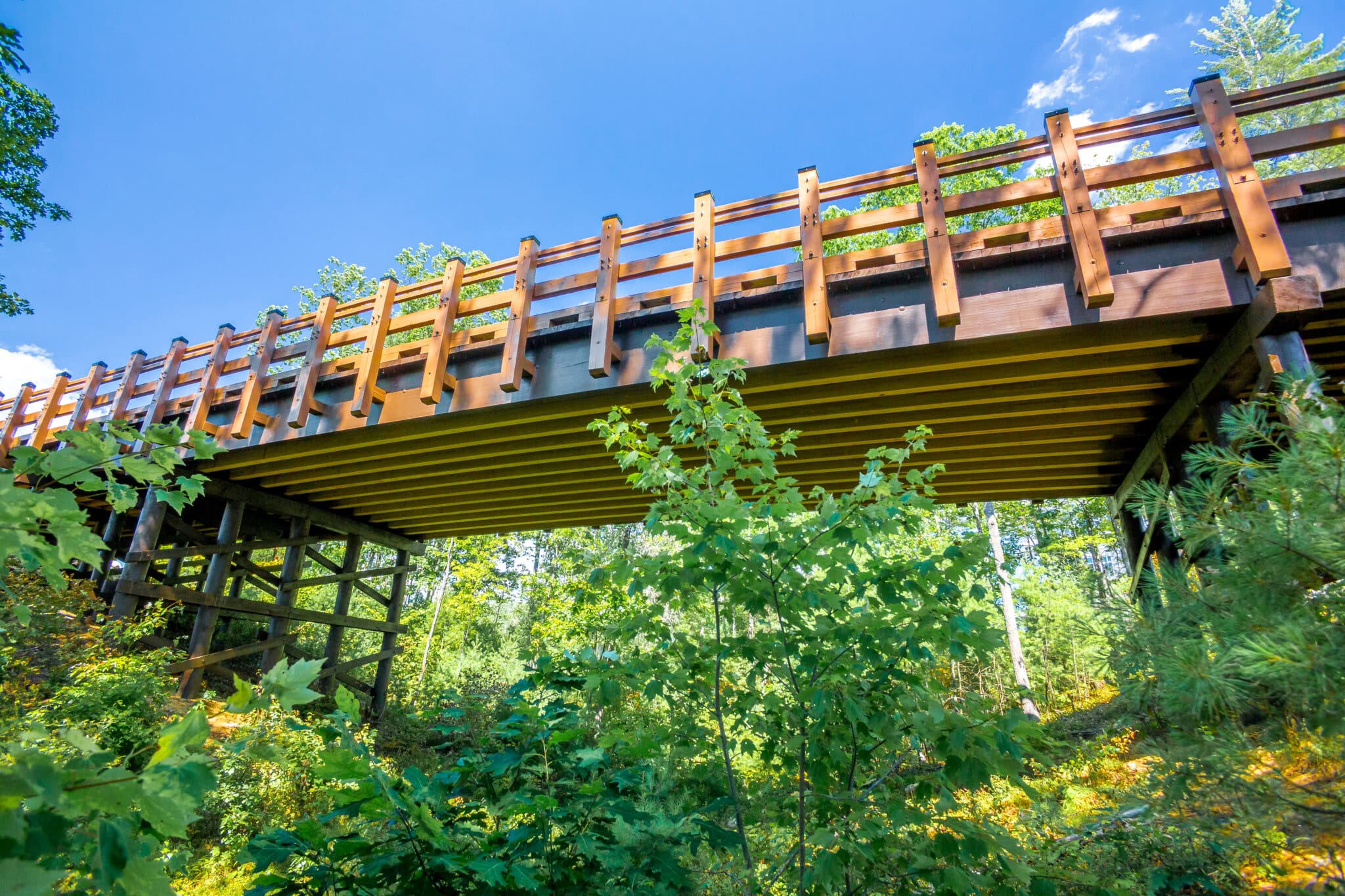
The Environmental Benefits of Wooden Bridges
Wooden bridges have been an essential part of infrastructure for centuries, dating back to when they were a staple in cities and towns around the world. However, as steel and concrete became more common, the use of wood in bridge construction decreased. In recent years, however, there has been a resurgence of interest in wooden bridges, largely due to the growing awareness of their environmental benefits.
This post will explore the numerous environmental benefits of wooden bridges, particularly in the context of modern construction. As the cornerstone of a topic cluster focused on this subject, we will cover a variety of angles, from the sustainability of wood as a construction material to its advantages over concrete and steel, and how wooden bridges fit into the broader concept of green infrastructure.
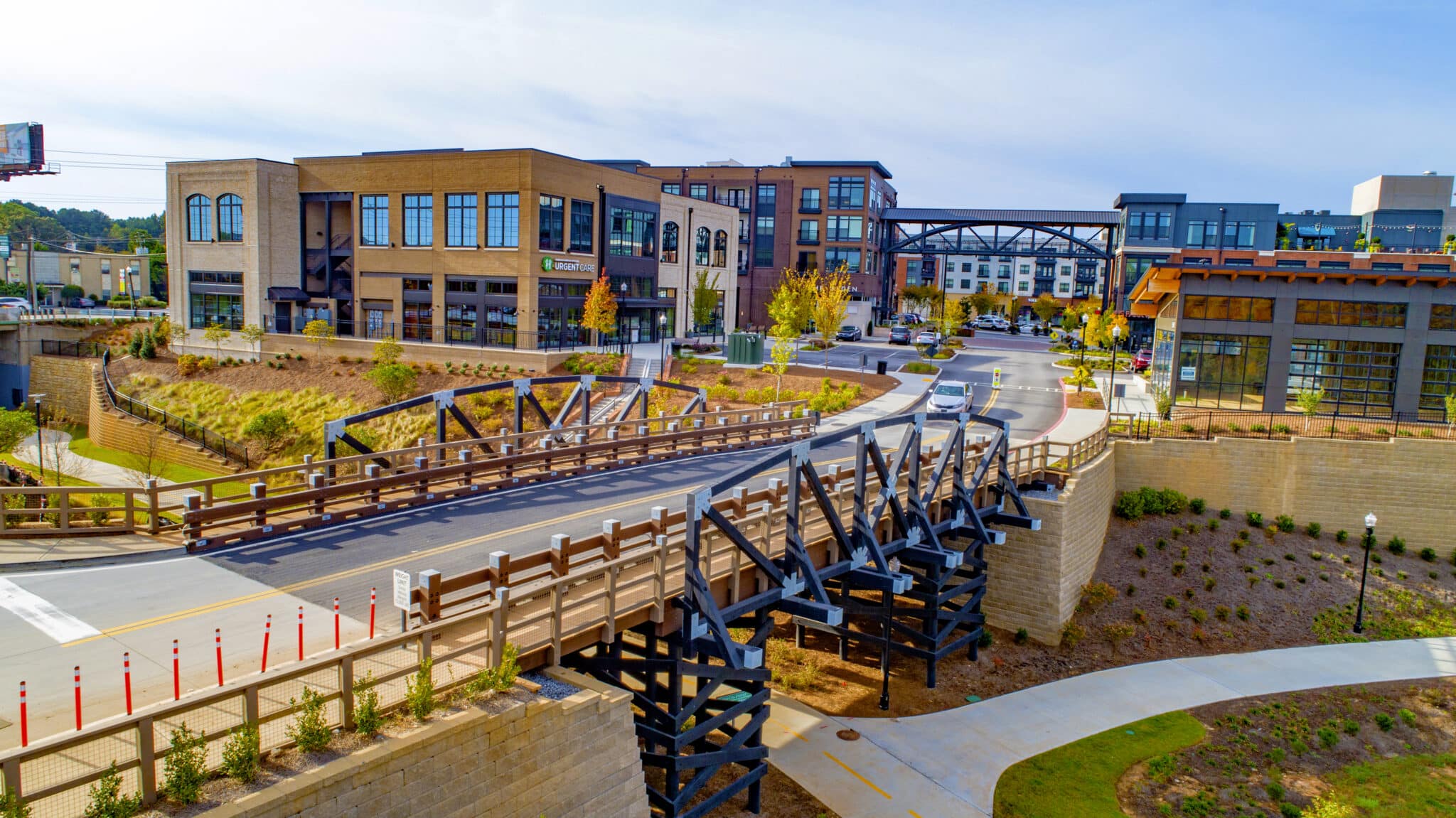
The Shift To Sustainable Infrastructure
With growing concerns over climate change, resource depletion, and environmental degradation, there has been a global shift toward sustainable infrastructure. The construction industry, responsible for significant energy consumption and CO2 emissions, plays a key role in these challenges. In response, architects, engineers, and policymakers are increasingly turning to eco-friendly alternatives, including the use of wood as a primary construction material.
Wooden bridges are at the forefront of this movement. Not only do they represent a sustainable and renewable resource, but their lifecycle, from production to demolition, often leaves a much smaller environmental footprint compared to their steel or concrete counterparts. York Bridge Concepts, as a leader in timber bridge construction, is uniquely positioned to highlight the growing relevance of wood in modern infrastructure.
This blog post explores why wooden bridges are not just a relic of the past but a forward-thinking solution for today’s environmental challenges.
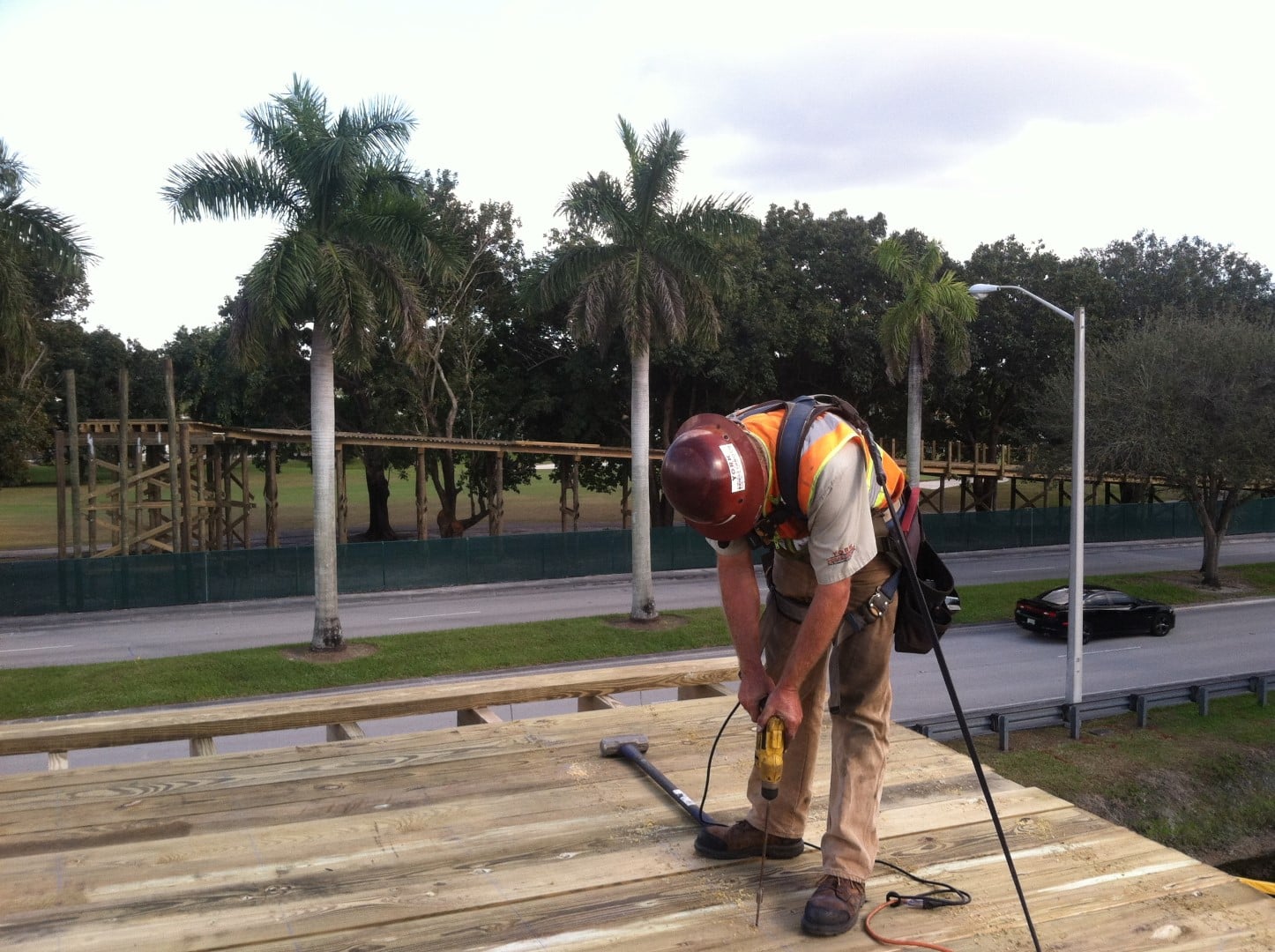
Sustainability of Wood as a Construction Material
Renewable and Natural Resource
Wood is one of the most sustainable building materials available. Trees, the source of wood, are a renewable resource, meaning they can be replanted and regrown within decades. Properly managed forests ensure a continuous supply of timber while maintaining biodiversity and reducing the risk of deforestation. This cyclical process creates an advantage for wood that is absent in materials such as steel or concrete, which rely on non-renewable resources.
Low Energy Consumption
Compared to the energy-intensive processes required to produce steel or concrete, wood production has a much lower carbon footprint. From felling the tree to milling the wood, the energy consumption is significantly lower, resulting in less greenhouse gas emissions.
In addition, wood acts as a carbon sink. Trees absorb carbon dioxide during their growth, and this carbon is stored within the timber throughout its life cycle, even when used as a building material. Thus, the use of wood in construction helps sequester carbon that would otherwise contribute to climate change.
Sustainable Forest Management
Organizations like the Forest Stewardship Council (FSC) and the Programme for the Endorsement of Forest Certification (PEFC) set standards for sustainable forest management. These certifications ensure that the wood used in construction comes from responsibly managed forests, preventing illegal logging, promoting biodiversity, and protecting ecosystems. Builders using certified wood can be confident that they are supporting environmentally friendly practices.
For more detailed information on wood’s sustainability, check out our blog on The Sustainability of Wood as a Construction Material.
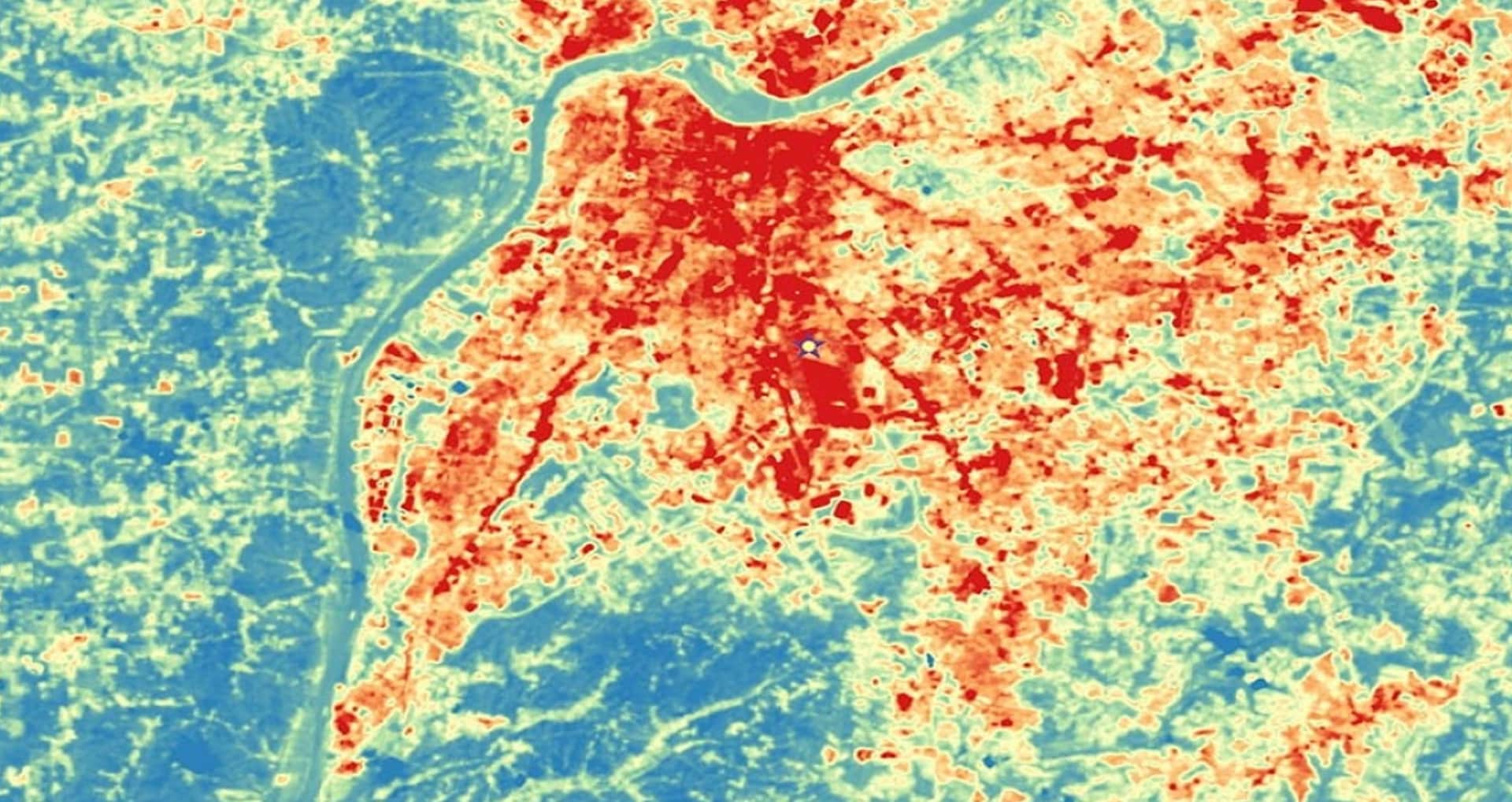
Environmental Advantages of Wood Bridges vs. Concrete Bridges
Reduced CO2 Emissions
Biodegradability and End-of-Life Benefits
One of the most overlooked environmental benefits of wooden bridges is their end-of-life disposal. When a wooden bridge reaches the end of its usable life, after about 75 to 100 years, the materials can decompose naturally or be repurposed, reducing waste. In contrast, steel and concrete structures are harder to dispose of, often requiring energy-intensive recycling processes or, worse, contributing to landfills.
Thermal Efficiency and Energy Use
Concrete and steel bridges absorb and retain heat, contributing to urban heat islands. Wooden bridges, on the other hand, have lower thermal conductivity, meaning they do not trap heat to the same extent. This can help mitigate the urban heat island effect in cities and reduce the overall energy load for cooling nearby areas.
Strong Lightweight Structure
Wood is a naturally lightweight material compared to concrete and steel. This makes wooden bridges easier to transport and install, reducing the fuel and energy needed for construction processes. Moreover, because wood structures are lighter, they often require less intrusive foundations, meaning less disturbance to the surrounding landscape during installation.
For a deeper comparison between wood and concrete bridges, refer to our blog on Environmental Advantages of Wood Bridges vs. Concrete Bridges.
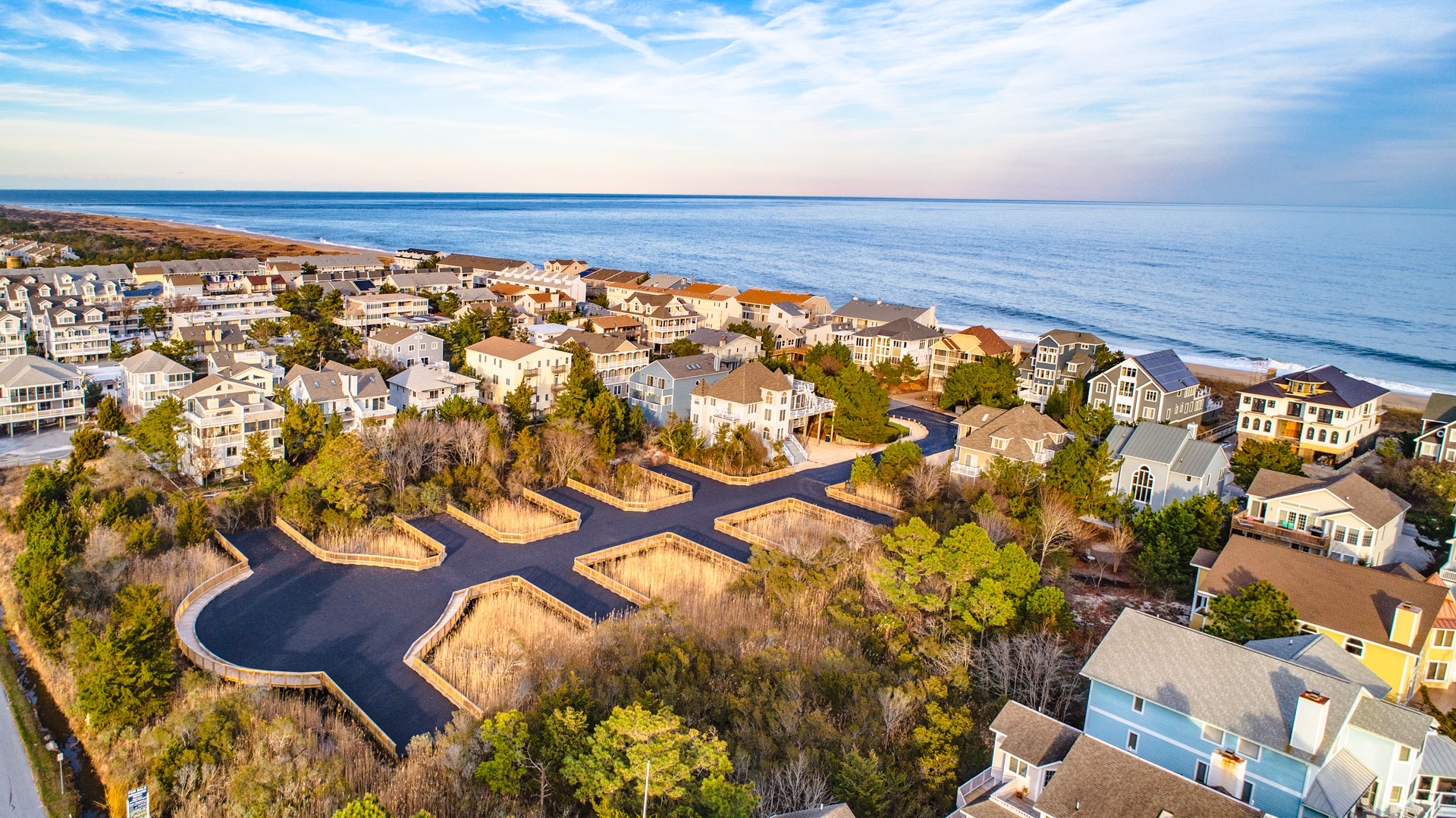
The Role of Wood Bridges in Green Infrastructure
Integration with Natural Landscapes
Wooden bridges naturally blend into their environments, making them ideal for eco-conscious projects. They complement the surrounding vegetation, water bodies, and ecosystems, making them a favored choice for parks, nature reserves, and greenways. In contrast, the stark visual impact of steel or concrete can often disrupt the aesthetic and ecological balance of natural areas.
Promoting Biodiversity
Green infrastructure projects aim to integrate natural and man-made environments in a way that promotes biodiversity. Wooden bridges are a key component of this vision, as they can be constructed in a way that minimizes environmental disruption. For example, footings can be designed to avoid interference with watercourses, and elevated wooden walkways can provide wildlife corridors under the bridge, preserving animal migration routes.
Flood Resilience and Water Management
Wooden bridges, particularly when used in pedestrian or light-vehicle contexts, can be built with designs that allow natural water flow and absorption, enhancing flood resilience. Because wood can absorb and release moisture, it can help mitigate localized flooding risks. Additionally, using permeable materials in conjunction with wood can promote groundwater recharge, a core principle of green infrastructure.
Carbon Sequestration
As mentioned earlier, wood acts as a carbon sink, continuing to store carbon dioxide even after construction. Incorporating wooden bridges into infrastructure projects enhances the project’s overall carbon sequestration potential. As cities and towns aim to meet climate goals, incorporating wood into infrastructure is a smart strategy for reducing net carbon emissions.
Wooden bridges are an excellent example of how to create infrastructure that works with nature rather than against it. For more on how wooden bridges fit into green infrastructure, read our post on The Role of Wood Bridges in Green Infrastructure.
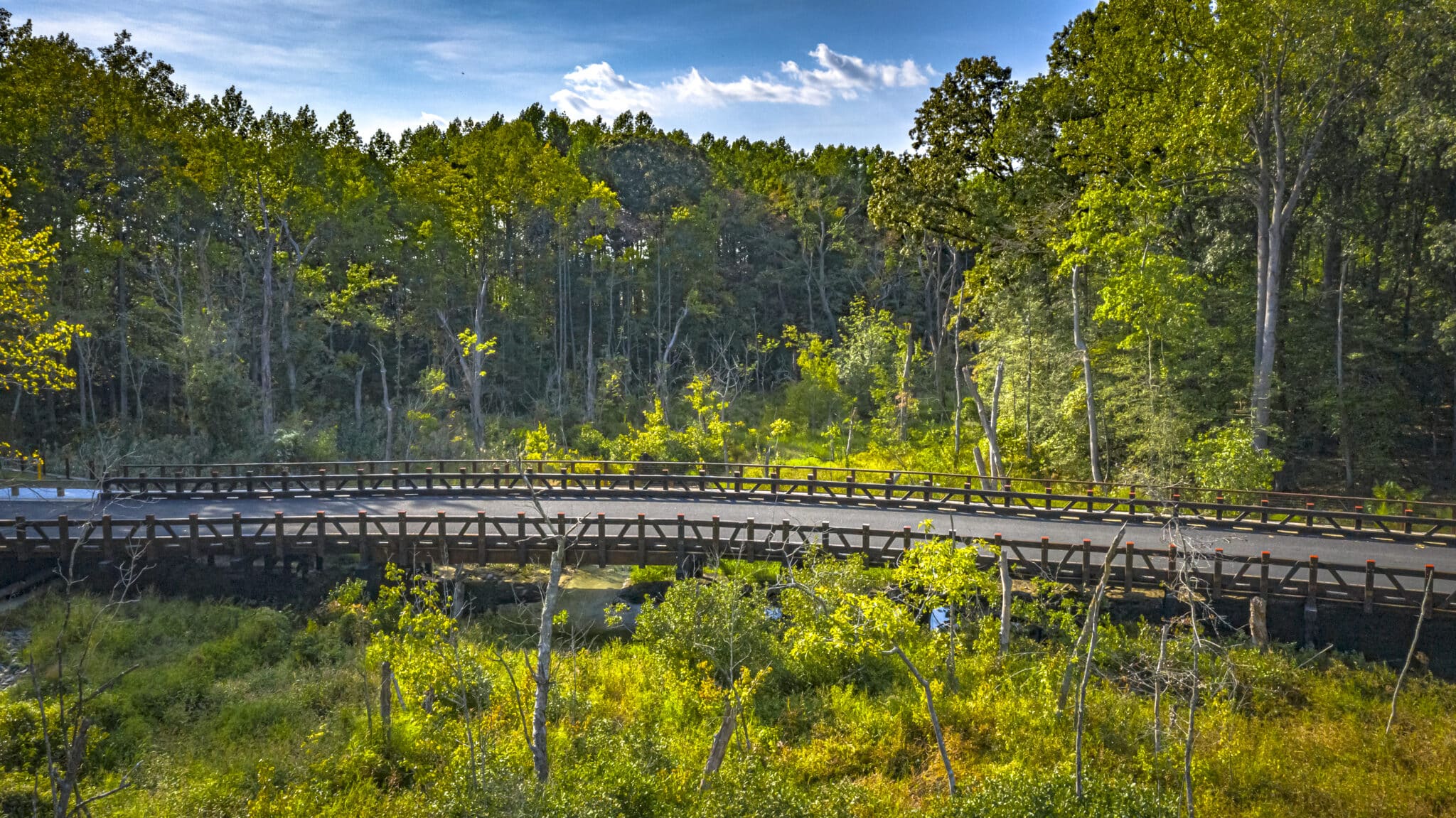
Case Studies on Environmental Benefits of Wooden Bridges
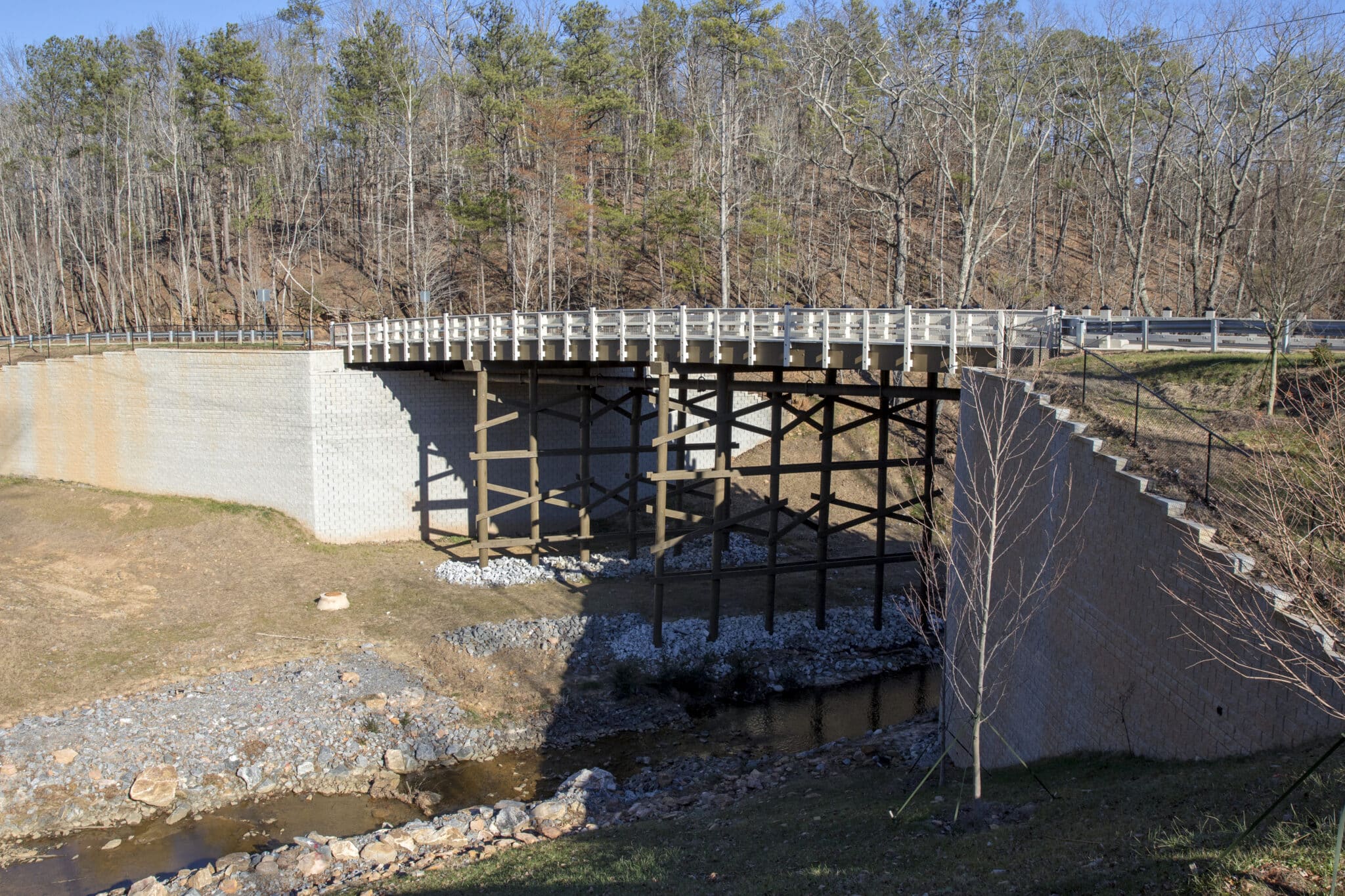
The Inspired Living Vehicular Timber Bridge
The Inspired Living Bridge in Alpharetta, GA is an example of a sustainable bridge that incorporates sustainably sourced timber and environmentally sensitive construction practices. The project, located in a pristine natural area, required a bridge that would blend into the surrounding wilderness, and avoid wetland mitigation costs. Using YBC's Sustainable Construction methods, and the bridge's minimal design minimized disturbance to the river and its ecosystems.
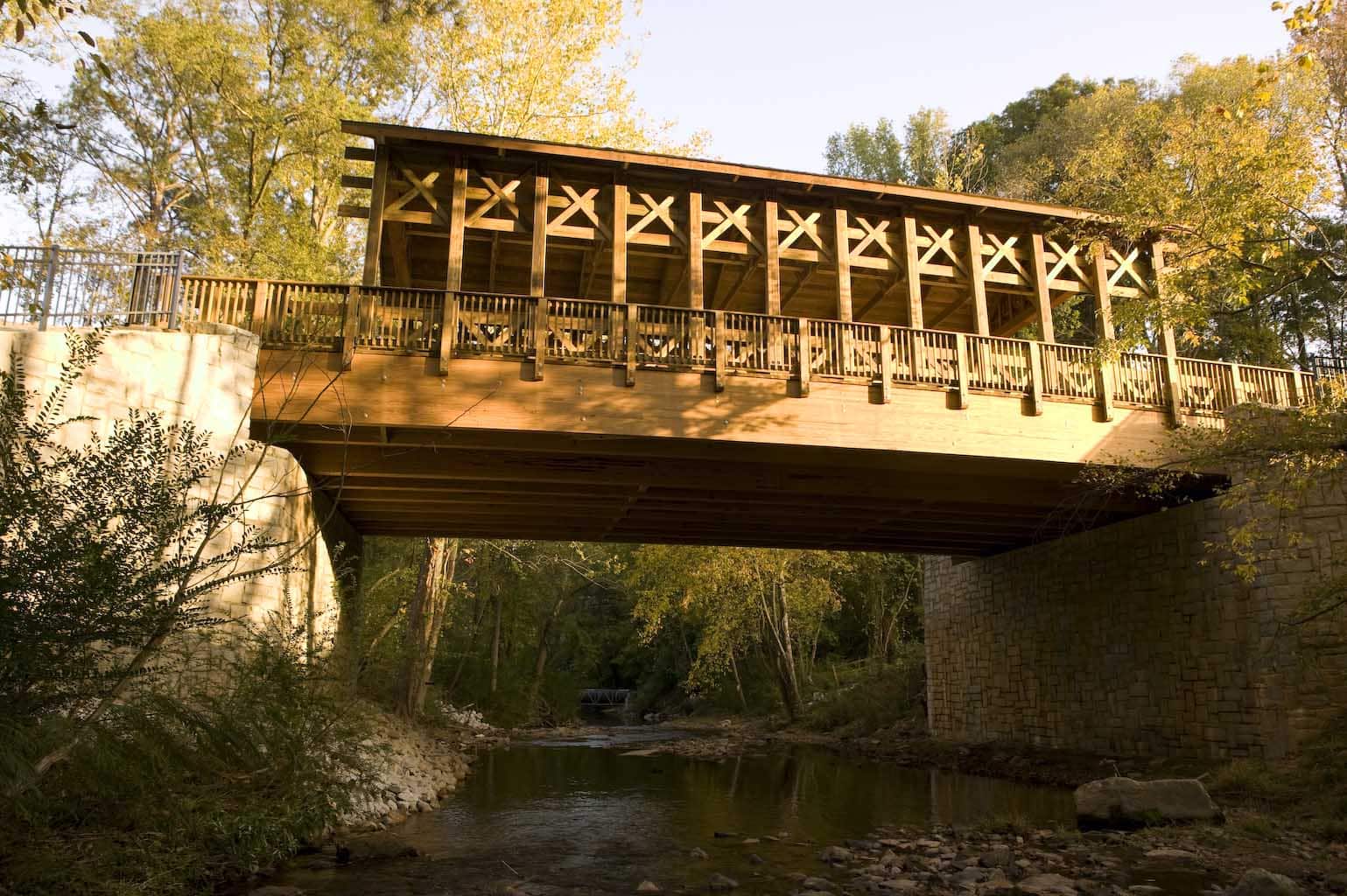
Woodbridge Timber Vehicular Bridge
This award-winning Woodbridge Project, located in Georgia, exemplifies the durability and sustainability of modern wooden bridge construction. It was built to replace a deteriorating steel bridge, and the timber used was sustainably sourced and treated with environmentally friendly preservatives. The project received acclaim for its low environmental impact, from sourcing to assembly, and its longevity ensures that it will continue to benefit the environment for decades.
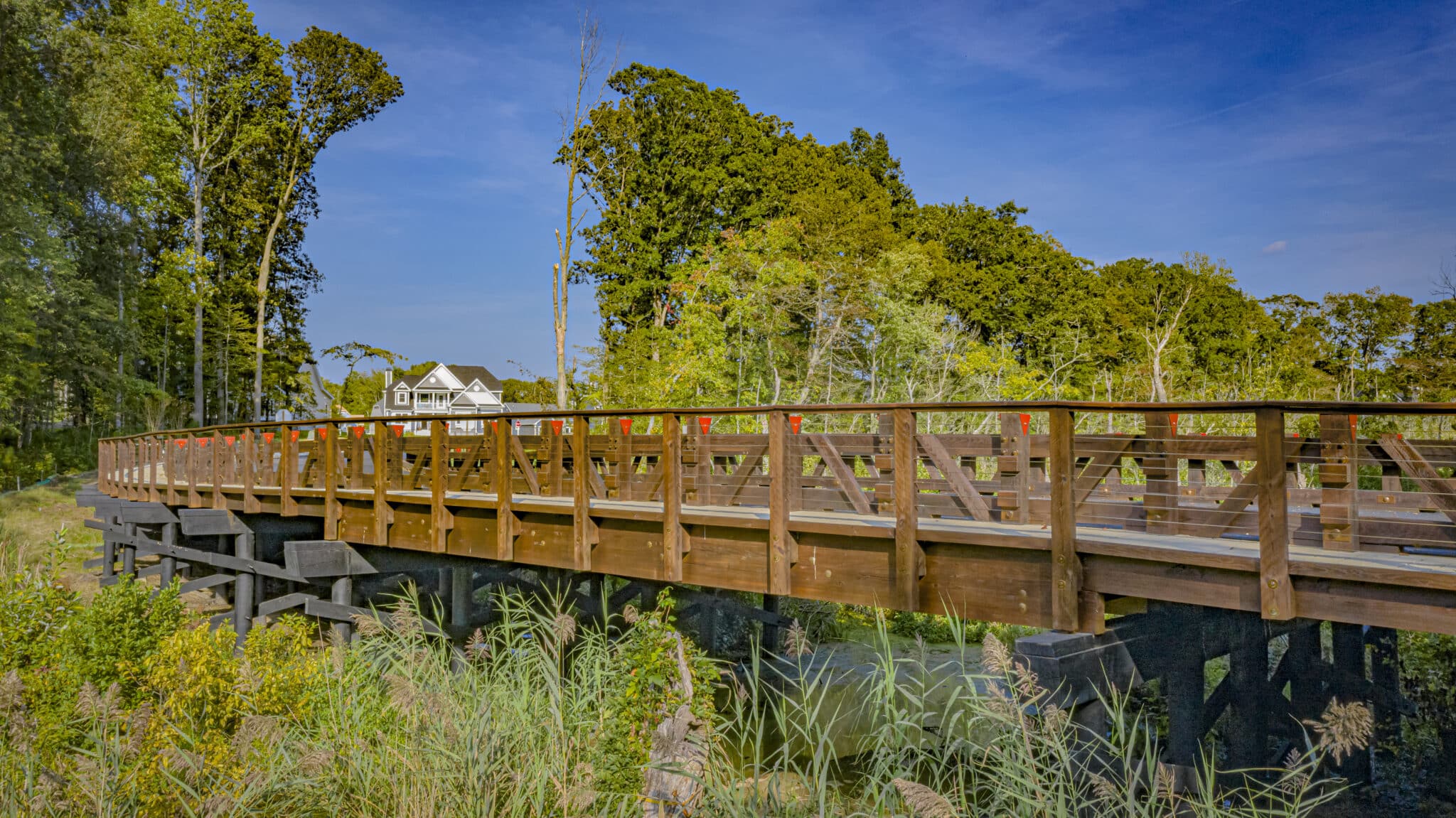
York Bridge Concepts Projects
York Bridge Concepts (YBC) has been at the forefront of sustainable wooden bridge construction, with numerous projects across the United States. One notable example is the timber bridge at Coastal Club, a sprawling green space that required environmentally sensitive solutions to connect various areas of the community. YBC’s bridge, made from sustainably sourced wood, harmonized with the surrounding landscape while ensuring durability and safety for community residents and visitors.
For a comprehensive look at other successful projects, explore our page on Case Studies on Sustainable Wood Bridge Projects.
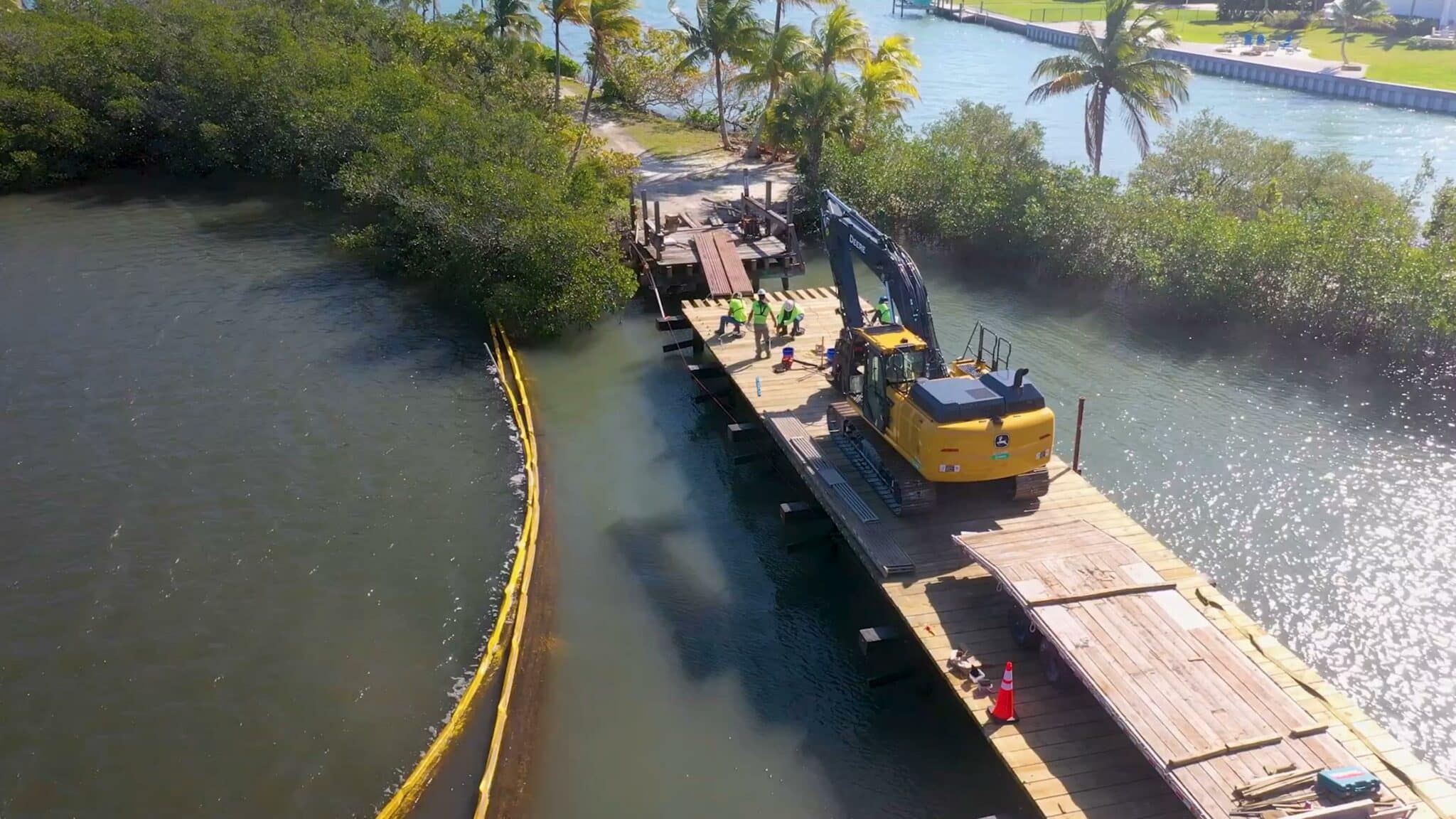
Frequently Asked Questions
Are wooden bridges as durable as concrete or steel bridges?
Yes! Modern engineering techniques allow wooden bridges to be just as durable as concrete or steel alternatives. By using treated wood and proper maintenance practices, wooden bridges can last decades, sometimes even longer than their steel or concrete counterparts.
How does the cost of building a wooden bridge compare to a concrete bridge?
Wooden bridges can be more cost-effective to construct, particularly in terms of materials and transportation. Additionally, the environmental benefits of wood, such as its lower carbon footprint and reduced energy consumption, make it an economically and ecologically attractive option in the long run.
Do wooden bridges require more maintenance?
While wooden bridges require regular maintenance, advancements in wood treatments and construction techniques have significantly reduced the amount of upkeep needed. Furthermore, many modern wooden bridges are treated to resist rot, decay, and insect damage, and don't required specialized equipment and labor.
How do wooden bridges contribute to sustainable urban planning?
Wooden bridges contribute to sustainable urban planning by integrating with green infrastructure initiatives, reducing carbon emissions, and promoting biodiversity. They are often used in eco-conscious developments, such as parks, nature trails, and low-impact transportation networks.
Can wood be used for large-scale bridge projects, or is it limited to smaller structures?
Wood can be used in a variety of scales, from small pedestrian bridges to large vehicular bridges. Advances in wood engineering, including the use of laminated and cross-laminated timber, have expanded the possibilities for wooden bridges in large-scale infrastructure projects.
Wood Bridges: Providing Modern Solutions To Infrastructure Development
Wooden bridges represent a remarkable solution to many of the environmental challenges posed by modern infrastructure development. From their renewable origins to their low energy requirements and ability to sequester carbon, wood bridges offer clear environmental benefits over traditional steel and concrete structures. Furthermore, their integration into green infrastructure highlights the versatility of wood as a material that works harmoniously with nature.
At York Bridge Concepts, we believe that wooden bridges are more than just functional structures—they are vital components of a sustainable future. By embracing wood as a key building material, we can create infrastructure that not only meets the needs of today but also safeguards the environment for generations to come.
If you’re interested in learning more about the environmental benefits of wooden bridges or exploring other resources in this topic cluster, check out our additional blog posts on the Sustainability of Wood as a Construction Material, Environmental Advantages of Wood Bridges vs. Concrete Bridges, and The Role of Wood Bridges in Green Infrastructure.
Create Your Legacy Today
Discover the intersection of strength, durability, and environmental responsibility with York Bridge Concepts. Let's build a bridge to the future together.

